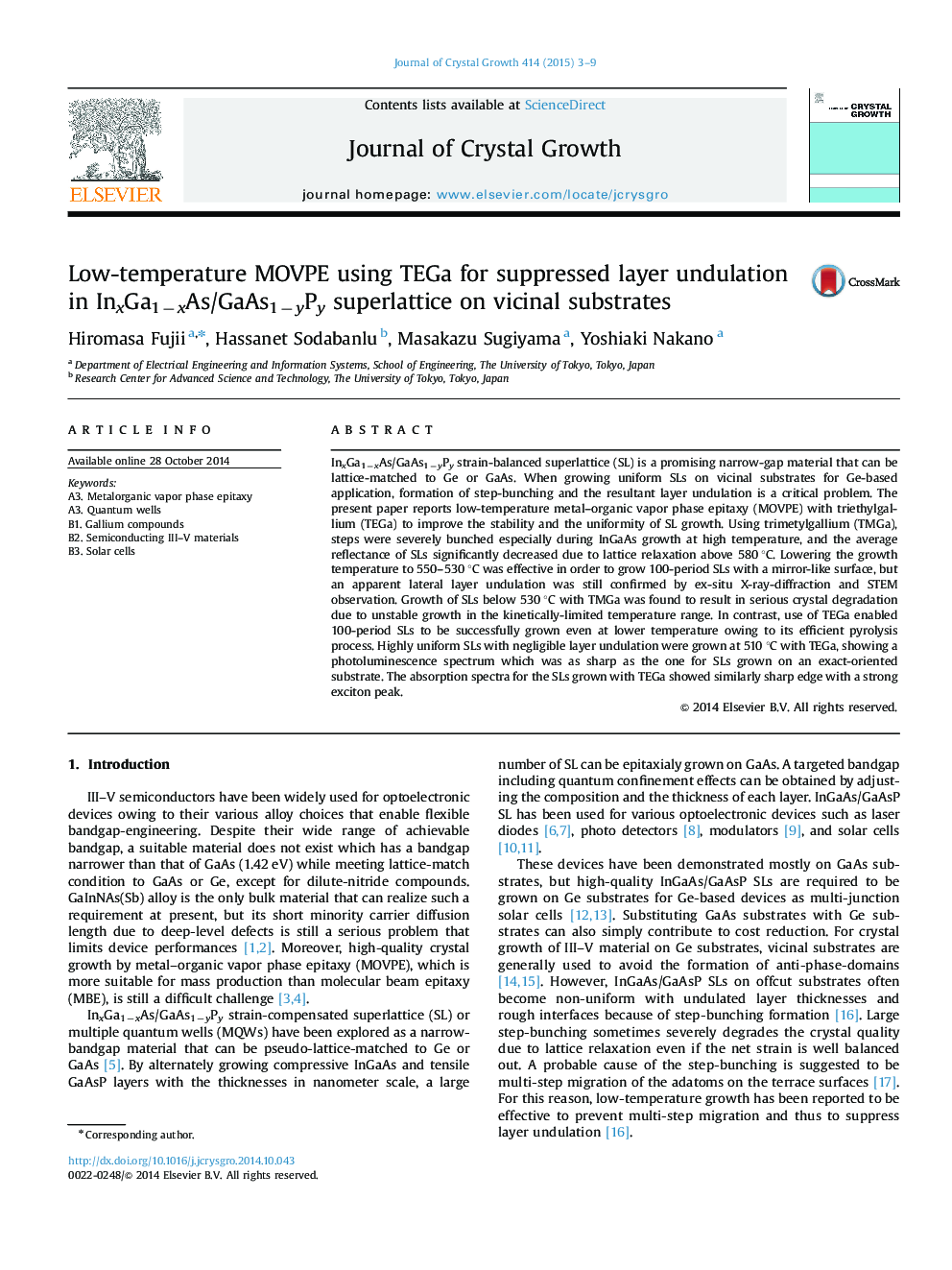| Article ID | Journal | Published Year | Pages | File Type |
|---|---|---|---|---|
| 1790115 | Journal of Crystal Growth | 2015 | 7 Pages |
•InGaAs/GaAsP strain-compensated superlattices were grown on 6°-off GaAs (0 0 1) substrates.•Layer undulation due to step bunching in InGaAs occurred at high growth temperature.•Growth with TMGa below 530 °C deterioarted the crystal quality due to unstable kinetically-limited growth.•Use of TEGa allowed 100-period SLs to be stably grown at even lower temperature.•Uniform SL growth at 510 °C was confirmed by in-situ RA monitoring, XRD, STEM, PL, and FTIR.
InxGa1−xAs/GaAs1−yPy strain-balanced superlattice (SL) is a promising narrow-gap material that can be lattice-matched to Ge or GaAs. When growing uniform SLs on vicinal substrates for Ge-based application, formation of step-bunching and the resultant layer undulation is a critical problem. The present paper reports low-temperature metal–organic vapor phase epitaxy (MOVPE) with triethylgallium (TEGa) to improve the stability and the uniformity of SL growth. Using trimetylgallium (TMGa), steps were severely bunched especially during InGaAs growth at high temperature, and the average reflectance of SLs significantly decreased due to lattice relaxation above 580 °C. Lowering the growth temperature to 550–530 °C was effective in order to grow 100-period SLs with a mirror-like surface, but an apparent lateral layer undulation was still confirmed by ex-situ X-ray-diffraction and STEM observation. Growth of SLs below 530 °C with TMGa was found to result in serious crystal degradation due to unstable growth in the kinetically-limited temperature range. In contrast, use of TEGa enabled 100-period SLs to be successfully grown even at lower temperature owing to its efficient pyrolysis process. Highly uniform SLs with negligible layer undulation were grown at 510 °C with TEGa, showing a photoluminescence spectrum which was as sharp as the one for SLs grown on an exact-oriented substrate. The absorption spectra for the SLs grown with TEGa showed similarly sharp edge with a strong exciton peak.
